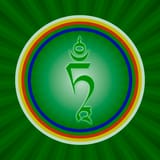>>40532806In Korean shamanism (**Musok** or **Muism**), the shaman—called a **무당 (Mudang)**—serves as a vital bridge between the human and spirit worlds, acting as a healer, ritualist, mediator, and cultural preserver.
Core Functions of a Mudang:**
1. **Mediator of Spirits (신령님의 중매자)**
- Communicates with **spirits (신령)**—ancestors, nature deities, mountain gods, and restless ghosts—to resolve human suffering.
- Performs **굿 (Gut)**: Rituals involving music, dance, prayer, and offerings to appease spirits, seek guidance, or cleanse misfortune.
2. **Healer of Mind and Body (정신적 및 신체적 치유자)**
- Addresses physical/mental illness believed to stem from **spiritual imbalance** (e.g., ancestral anger, ghostly attachment).
- Uses divination (**점/Jeom**) to diagnose causes (e.g., using coins, rice, or animal bones).
3. **Psychopomp (영혼 인도자)**
- Guides lost or troubled spirits to the afterlife, preventing hauntings.
- Resolves "spirit sickness" (**신병/Sinbyeong**) in initiates—a calling marked by visions/illness.
Divine Calling: Most shamans are chosen by spirits (신내림/Shinaerim), experiencing visions, dreams, or illness until they accept their role.
Initiation Requires rigorous training under a senior shaman, culminating in the 림굿 (Naerim Gut) a ritual to "wed" the initiate to their guardian spirit.
90% of modern mudang are women
Key Sp Resolving deep collective sorrow through ritual.
In essence, the mudang isn’t just a "mystic"—they are healers, historians, and activists safeguarding Korea’s soul in an age of dislocation.

